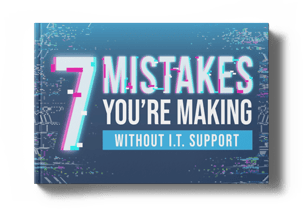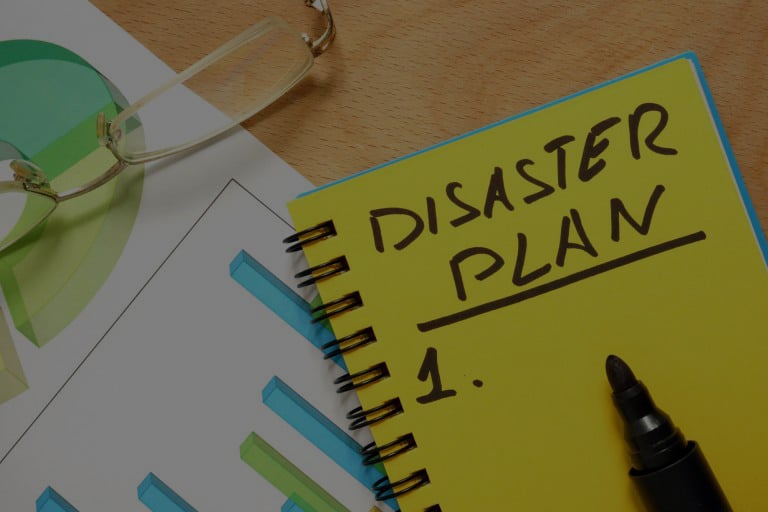4 min read
A Managed Approach to Shutting Down the Ransomware Bandits
Are you ready to tackle a blank screen caused by ransomware? Where will you turn when no single strategy provides complete protection and even...
In order to really minimize the chance of extended downtime for your business, it’s important to understand and implement a backup and disaster recovery plan. The fact is, your IT infrastructure is prone to things that can cause headaches for your business. Whether it’s human error, security breaches, or ransomware attacks, your IT resources are all vulnerable at any point in time. That brings us to backup and disaster recovery. What is backup and disaster recovery? Taking the time to understand what goes into it and why you need it as part of your cybersecurity process will help you to develop strategies to reduce downtime and the consequences that come along with it.
Backup and disaster recovery service refers to both the backing up of your important data and business information and the steps to take in order to recover your lost data. It’s vital to have both of these components in place, as it doesn’t do much good to have one or the other. It’s important to have multiple copies of all your data, but if you don’t have a plan in place, how are you going to restore your information?
.webp?width=600&height=400&name=1-1%20(1).webp)
Backup refers to the process of copying your data, creating multiple versions of your important information. The inevitability of accidental deletion of data, data corruption, security breaches, or general software/hardware issues makes it necessary to protect your assets. Backing up data is the first step in doing so.
Disaster recovery is referring to the plan you have in place to quickly restore these backups and reestablish your system processes in order to experience the least amount of downtime possible. There are several different ways of planning your disaster recovery and will depend on your specific business.
It’s a common point of confusion for some, however disaster recovery and business continuity are two different components of protecting your business. Business continuity refers to the overall plan in place that allows you to keep business going during a disaster. Disaster recovery refers to the process of getting vital IT systems back up and running to minimize business downtime, getting your operations back on track in the least amount of time possible.
Business continuity has a larger scope than disaster recovery as it focuses on business operations as a whole, and how your employees will continue working during difficult circumstances. Basically, this strategy of business continuity is the difference between a business surviving or experiencing a complete shutdown. It involves planning out what you have to do during a disaster by weighing the pros and cons ahead of time, the benefits versus the cost of keeping business going. It’s more data management at this point, and is a recommended practice even without the experience of a disaster.

Disaster recovery is essentially one component of the overall business continuity plan. By having a disaster recovery strategy in place to get your systems back to operating normally after a disaster, you have a much stronger chance of avoiding the outcome that far too many businesses experience. According to a study, 93% of businesses who experienced loss of data for 10 days or more due to a disaster filed for bankruptcy within the year. 94% of businesses that experience a catastrophic loss of data do not survive, 43% never reopen their doors and 51% close within two years of the disaster.
Perhaps the two most important aspects of a disaster recovery plan are Recovery Time (RTO) and Recovery Point (RPO). These two factors help businesses determine their optimal recovery plan. Both of these cover two different aspects of your strategy and work together to get you back up and running quickly and efficiently.
RTO refers to the amount of time allotted that your business would be able to survive any sort of downtime. It basically will give you and your MSP a deadline for getting your systems back up to speed. Going past this deadline will result in significant, unacceptable damage. If your RTO is 48 hours, that means you’ve determined your business can survive that amount of time without having your typical data and systems available.
RPO refers to the amount of data your business is able to lose before you experience catastrophic loss. In reality, everyone will experience at least some loss of data during a disaster. What RPO measures is the amount your business can tolerate before an unacceptable amount of data loss occurs.
In today’s technology landscape, the cloud is becoming more and more prominent in our IT infrastructures. However, a lot of people don’t realize it’s benefits in disaster recovery.
.webp?width=600&height=400&name=2-1-1%20(1).webp)
DRaaS stands for disaster recovery as a service. Focusing on short RPO times, it helps to ensure businesses that the data being restored will be as close to when the outage occurred as possible. By having a third party replicate the host of physical and virtual servers, you are provided with a failover in case of a disaster. This ensures that when an outage occurs, your data will not be lost, as it will be switched over to that replicated third party server.
As a business owner, you can’t afford to move forward without some sort of plan in place to safeguard your systems against inevitable disaster. It’s an unavoidable reality in our technology driven world, with too many threats surrounding us. Taking the time to really strategize how your business can work through a disaster, get your operations back to normal, and come out the other side relatively unscathed, is going to give you the confidence that your business can survive these disasters. At Valeo Networks, we provide our customers with everything from 24/7 network monitoring to customized IT roadmaps, developing backup and disaster recovery plans to fit your specific business. Reach out to our team for a free consultation so that you can be prepared to manage disaster when it strikes.


4 min read
Are you ready to tackle a blank screen caused by ransomware? Where will you turn when no single strategy provides complete protection and even...

As a business owner, you need to protect your assets. This includes the important data that you rely on for your day to day operations. Without...

Whether your business is large or small, you need a disaster recovery plan in place. In fact, here are 5 reasons why an IT disaster recovery plan is...

With cutting-edge technology and quality customer service,
you’ll find everything you need to help your company soar
with Valeo Networks.
1006 Pathfinder Way
Rockledge, FL 32955
Business Hours:
M-F: 8AM-9PM
© 2024 Copyright Valeo Networks. All Rights Reserved.